Yes, Samsung Is Swapping SSD Parts Too
Samsung is the latest SSD vendor to be caught with its hand in the cookie jar. A Chinese YouTuber is claiming Samsung has swapped components on its 970 Evo Plus SSD, one of the best SSDs on the market right now.
It's not that component swapping wasn't a thing prior to the pandemic. With the global semiconductor shortage, it just became a more common practice now. SSD vendors, including Adata, Patriot, Crucial and Western Digital have switched parts from some of their drives.
A DigiTimes report confirmed that Samsung has been facing a SSD controller shortage due to the fact that its Texa factories, which produce SSD controllers, have been idle since February.
The shortage probably forced Samsung to change the components on the 970 Evo Plus. It's uncertain if other lineups received the same treatment. In any case, the manufacturer has changed the packaging, part numbers and updated the product sheet for the 970 Evo Plus, giving consumers a friendly heads-up.
Starting with the most obvious, both the new and old 970 Evo Plus come in a rectangular box, but the orientation of the design is slightly different. The new version favors a vertical design, while the old one sticks to a horizontal design. The part numbers are also different and will help customers differentiate one revision from the other. The new version is labeled with the MZVL21T0HBLU part number and the old version sports the MZVLB1T0HBLR part number.
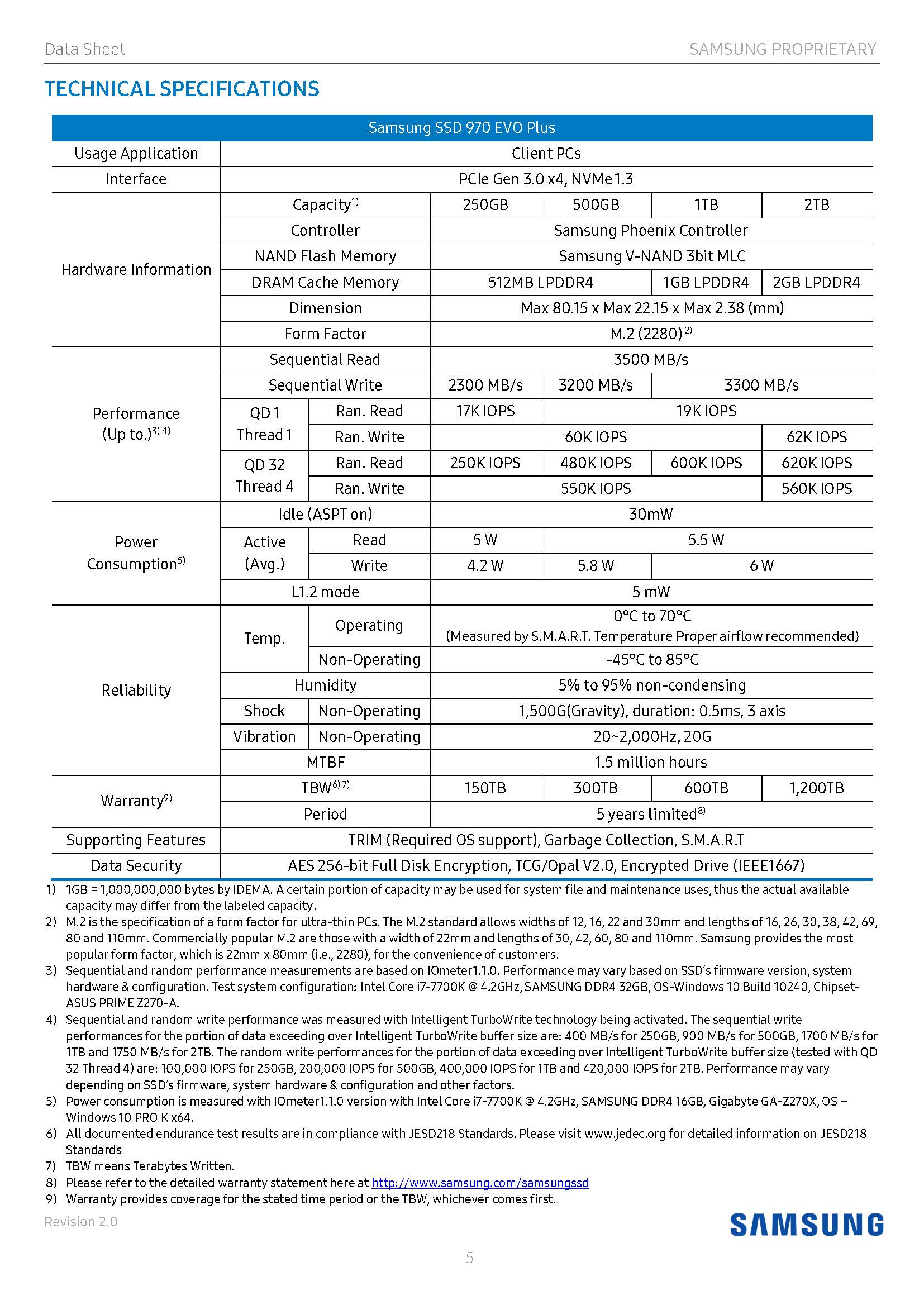
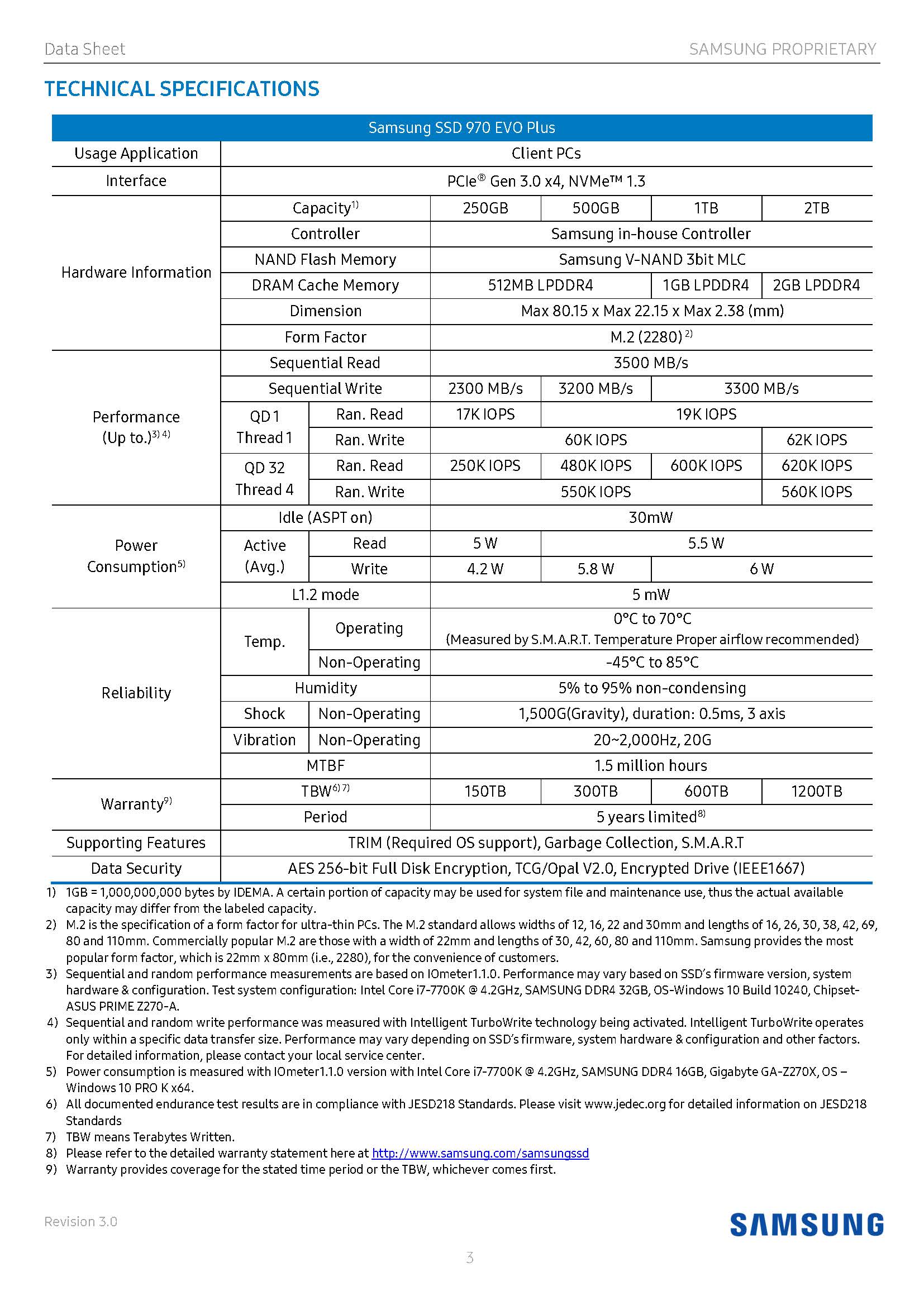
If you look at the the Samsung 970 Evo Plus 2019 and 2021 data sheets side by side, you can see that the drive's sequential and random performance remained intact. However, it's obvious that Samsung changed the SSD controller on the new version. While the original specification table proudly mentions the Phoenix SSD controller, the revised version obscurely specifies an "in-house" controller.
The previous data sheet defined the sequential and random write performance when the TurboWrite buffer size is exceeded at footnote number 4. Samsung removed the values on the new data sheet, which may send of the wrong signals to consumers.
Get Tom's Hardware's best news and in-depth reviews, straight to your inbox.
Samsung 970 Evo Plus Revisions
| SSD | Controller | NAND | LPDDR4 | Part Number |
|---|---|---|---|---|
| Samsung 970 Evo Plus (New) | Elpis (S4LV003) | K9DUGY8J5B-CCK0 | K4F8E3D4HF-BGCH | MZVL21T0HBLU |
| Samsung 970 Evo Plus (Old) | Phoenix (S4LR020) | K9DUGY8J5B-DCK0 | K4F8E3D4HF-BGCH | MZVLB1T0HBLR |
On a hardware level, the original 970 Evo Plus employs Samsung's Phoenix controller (S4LR020) and 92-layer 3D TLC NAND flash with the K9DUGY8J5B-DCK0 identifier. The new 970 Evo Plus, on the other hand, utilizes the Elpis controller (S4LV003).
For those not familiar with Samsung SSDs, the Elpis controller is the one that powers Samsung's 980 Pro SSD. Although the Elpis controller is designed for the PCIe 4.0 x4 interface, it's also backwards compatible with the PCIe 3.0 x4 standard, which is why Samsung can recycle it for the 970 Evo Plus. Basically, the new 970 Evo Plus is like a 980 Pro, but without the PCIe 4.0 speeds.
As far the NAND goes, the new 970 Evo Plus features K9DUGY8J5B-CCK0 modules, which should fall into the same 92-layer 3D TLC family as well. The LPDDR4 (K4F8E3D4HF-BGCH) DRAM is still the same for both revisions.
Due to the hardware change, the 970 Evo Plus drives have different firmwares. While the old version is on the 2B2QEXM7 firmware, the new variant operates with the 3B2QEXM7 firmware.
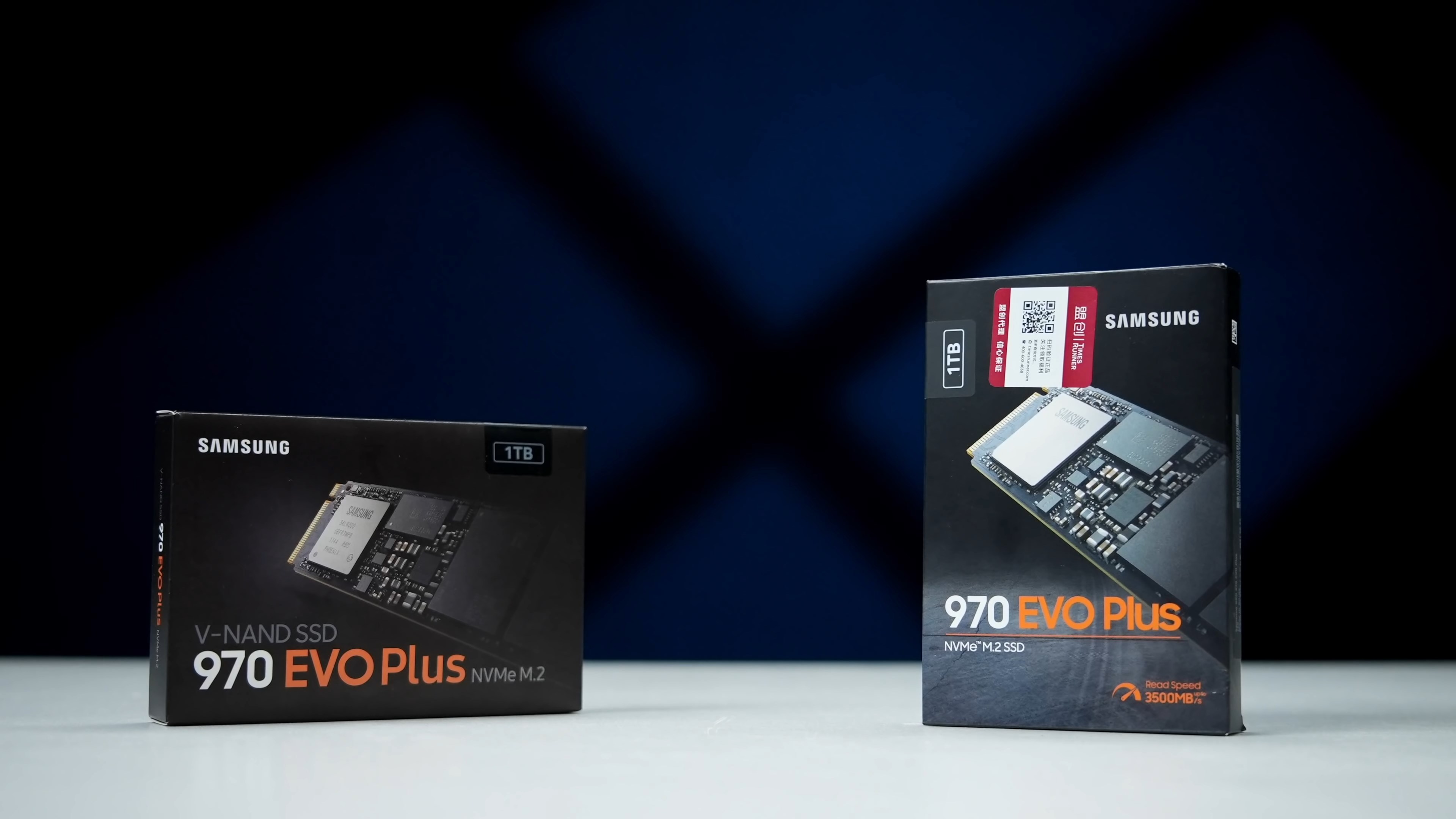
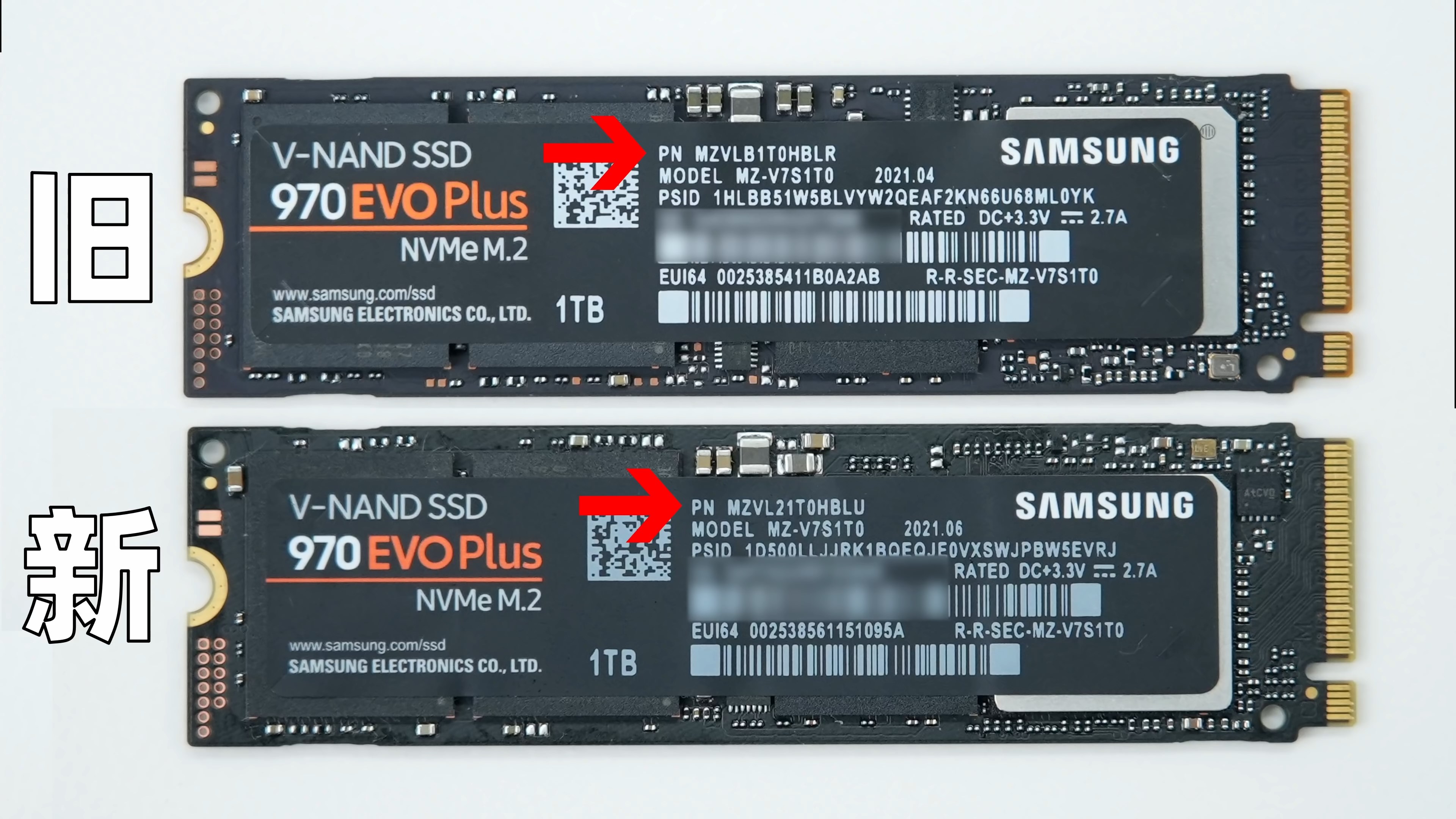
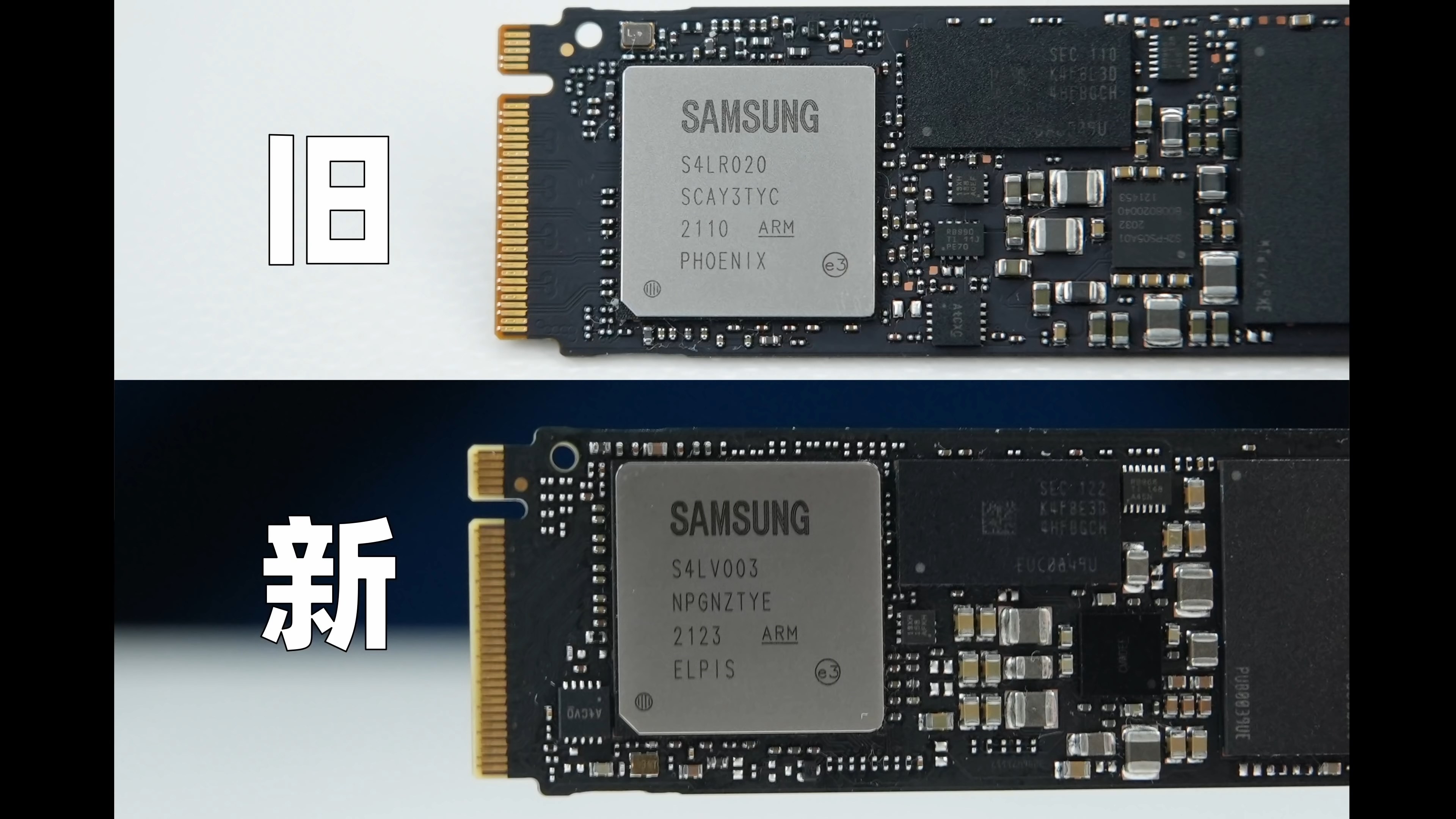

Synthetic benchmarks, such as CrystalDiskMark and AS SSD benchmark came back with mixed results. The new 970 Evo Plus delivered higher sequential read and random read and write performance in some metrics so it didn't outperform the previous revision in every workload.
The HD Tune Pro results revealed that Samsung has seemingly endowed the new 970 Evo Plus with a bigger SLC cache. The original version had 42GB, and the new version reportedly featured 115GB. However, there was a huge drawback. When the SLC cache was filled up on the new version, its write performance suffered a drastic decrease.
As per the result, the old version started at 1,750 MBps and eventually dropped down to 1,500 MBps after the 40GB mark. On the new version, the drive steadily performed at 2,500 MBps, but once the 115GB SLC cache was exhuasted, the SSD fell to 800 MBps. This represented a 47% performance hit.
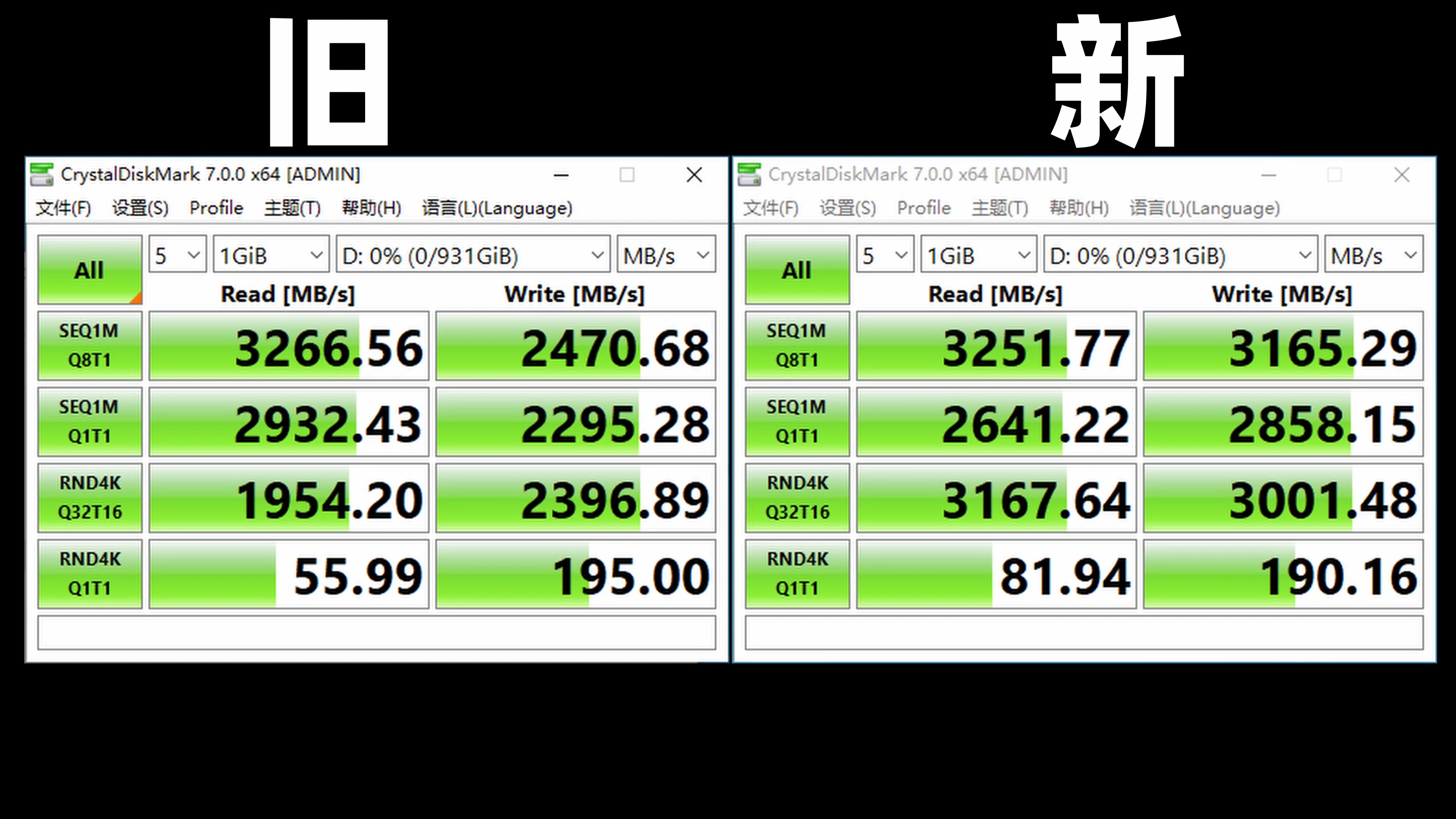
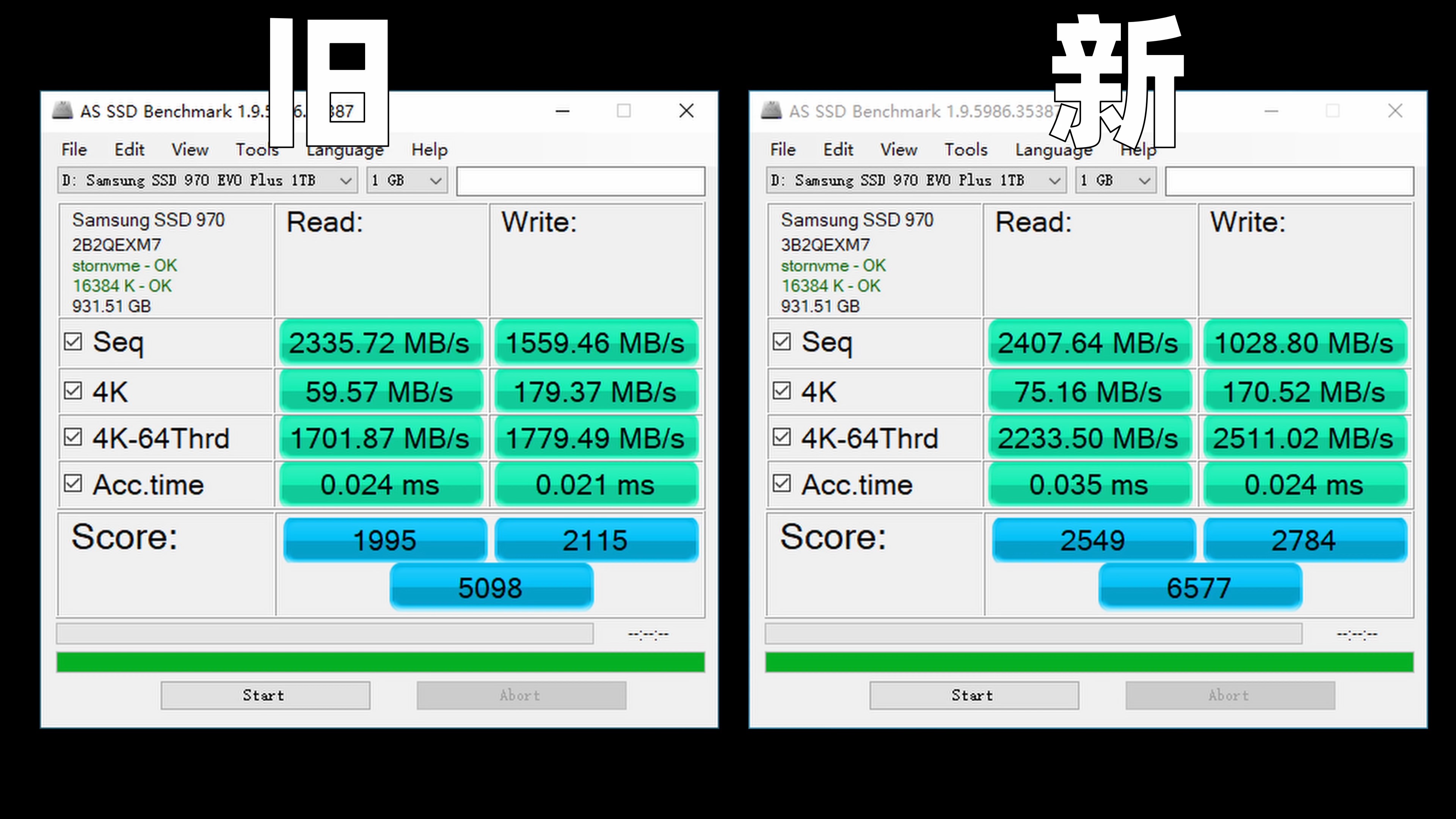
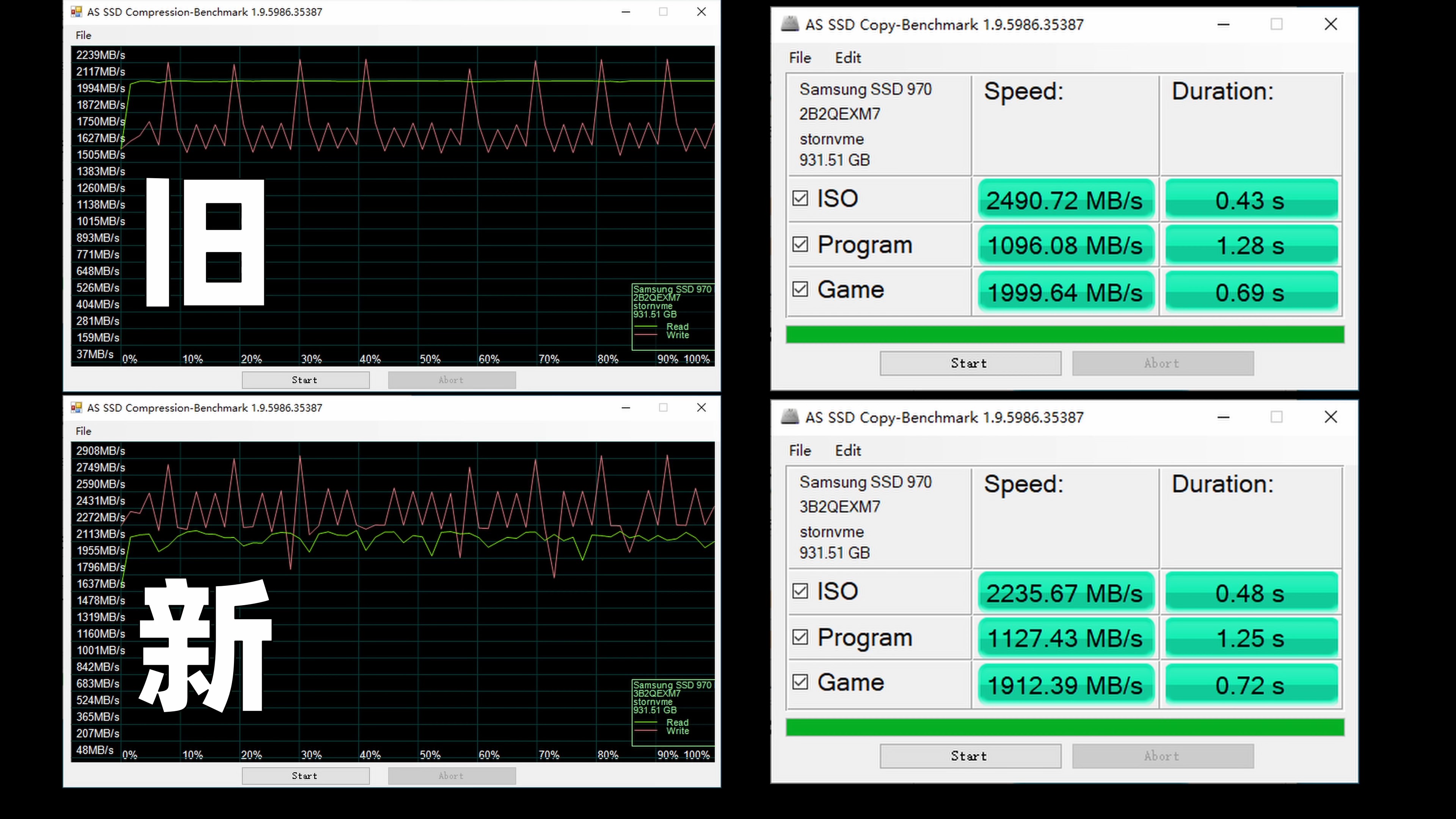
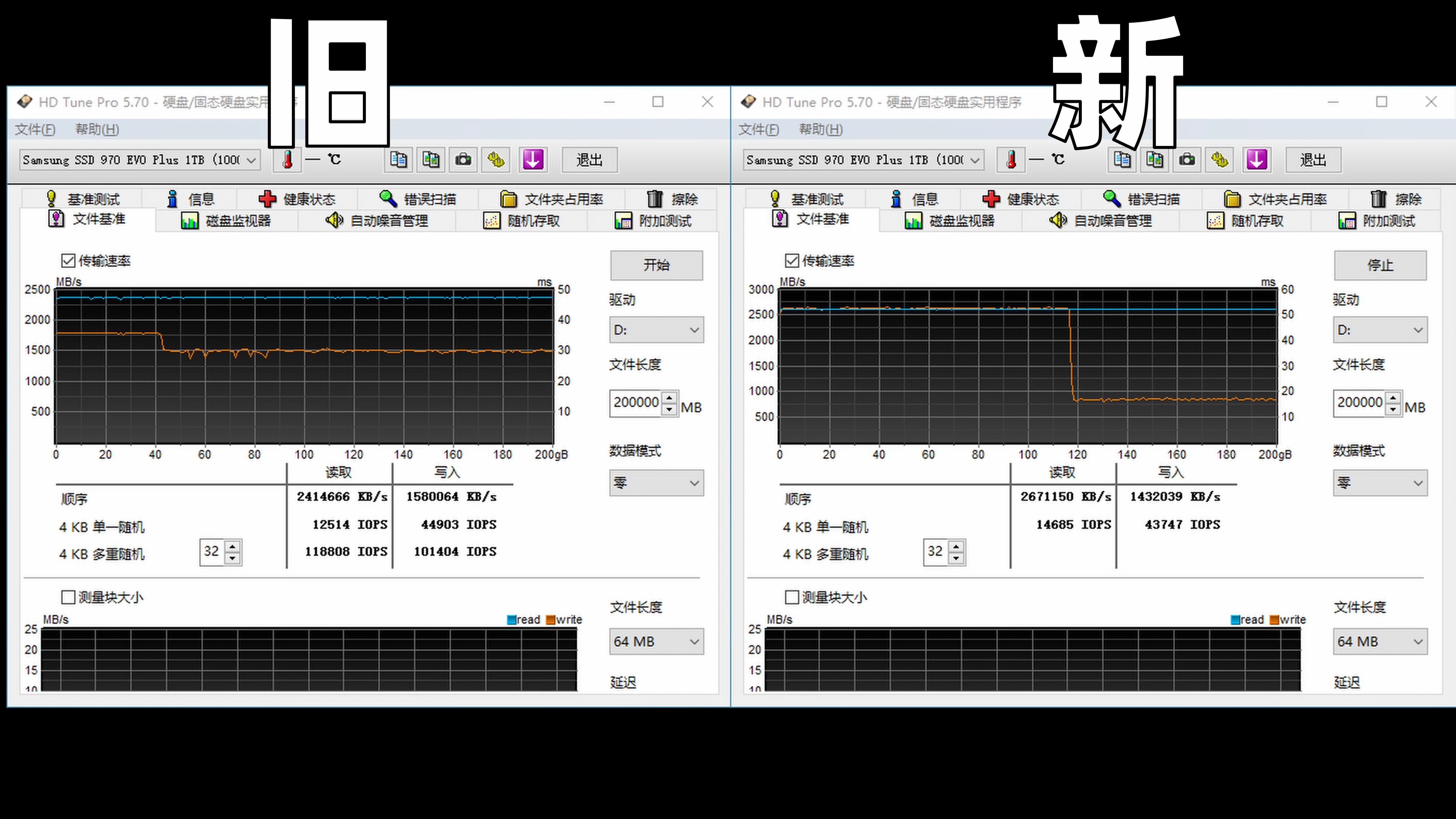
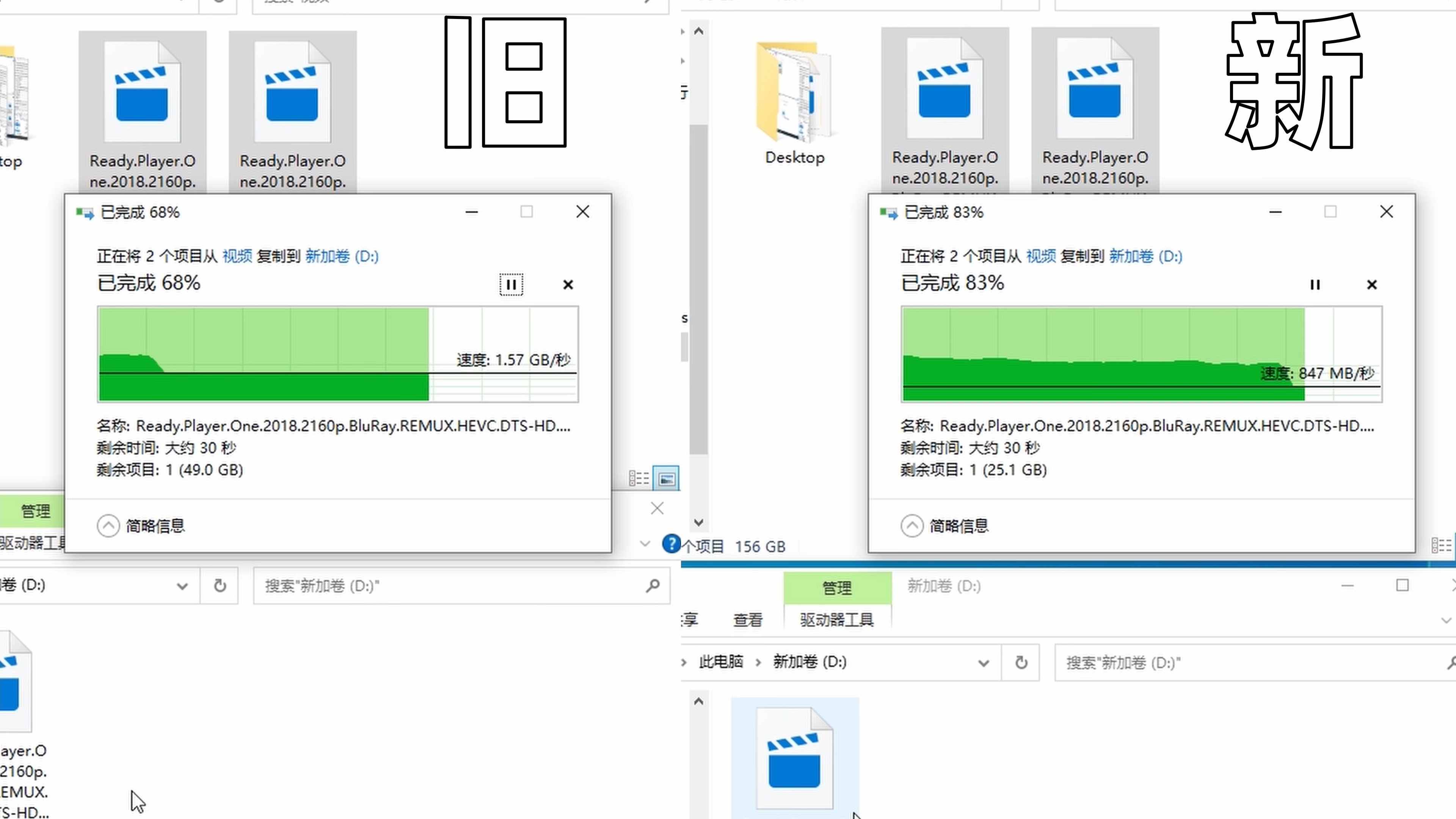
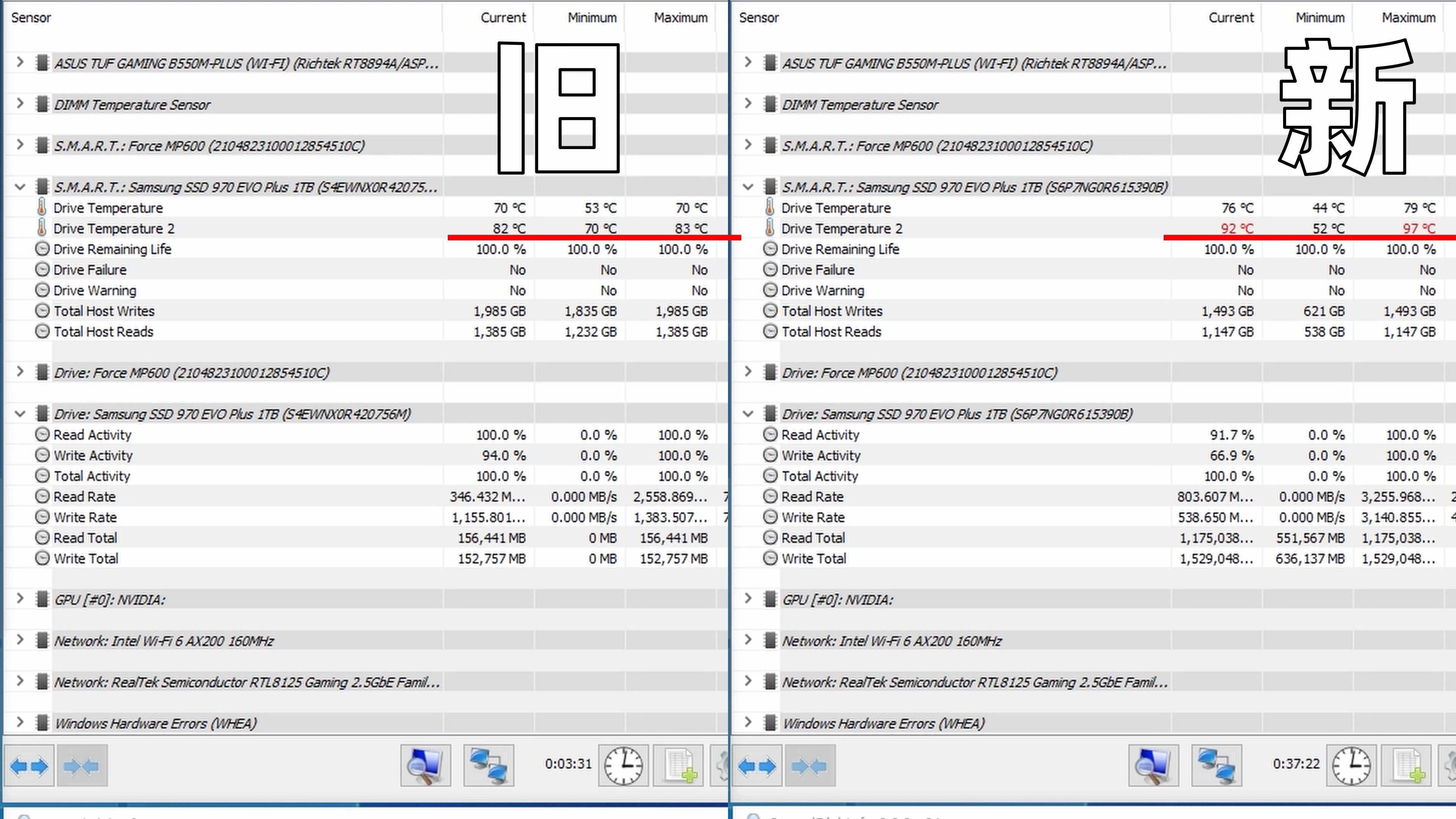
While synthetic results showed a significant difference, the two revisions performed similarly in a real-world copy test with a 154GB video file. The old version has a smaller SLC cache, but a higher sustained write performance. Although the new version's SLC cache is 173% bigger, it offers 47% lower sustained write performance. At the end of the day, everything balanced out and the new version finished the copying process just a hairline faster than the old version.
It's always tricky when it comes to thermal results since we can't vouch for the environment in which the tests were performed. According to the YouTuber's findings, the new version with the Elpis controller runs warmer than the old version with the Phoenix controller.

Zhiye Liu is a news editor, memory reviewer, and SSD tester at Tom’s Hardware. Although he loves everything that’s hardware, he has a soft spot for CPUs, GPUs, and RAM.
-
Alvar "Miles" Udell So the $145 Samsung 970 Evo Plus 1TB, in the articleReply
Vs my $300 Samsung 960 Pro 1TB
$300 well spent... -
cryoburner ReplyAlthough the new version's SLC cache is 173% bigger, it offers 47% lower sustained write performance.
I suspect this is a dynamic cache that shrinks as the drive is filled though? The cache size and performance described here might be accurate when the drive is mostly empty, but how do they compare when the drive is mostly full? I doubt most people are going to get a 1TB SSD just to leave most of that capacity unused, so knowing the performance when the drives are at least three-quarters full would probably be more meaningful, especially if the available cache shrinks considerably under that more realistic usage scenario.
Also, I wouldn't exactly say the component swap was "done right". They might have updated the 12-character part number and spec sheet, but how many people are going to read those? Many retailers probably won't even list that information, just selling the new part in place of the old one. The best way to do this would be to change the actual model number, like call it the 975 Evo Plus or something, so that people are not referencing reviews for an entirely different product when making their purchasing decisions. -
vern72 ReplyAlvar Miles Udell said:So the $145 Samsung 970 Evo Plus 1TB, in the article
Vs my $300 Samsung 960 Pro 1TB
$300 well spent...
At least your 960 PRO will outlast the 970 Evo Plus because of MLC (with two bits, not three!) -
USAFRet Reply
I've asked in here many times...vern72 said:outlast
"Has anyone ever, in normal consumer use, had an SSD die from too many write cycles?"
Ever?
So far, not a one.
Further:
"Has anyone exceeded the warranty TBW on their drive?"
Again, crickets.
600TBW vs 1200TBW is irrelevant if you only get to 100TBW in a decade (5 years past the warranty age out number) -
btmedic04 Replyvern72 said:At least your 960 PRO will outlast the 970 Evo Plus because of MLC (with two bits, not three!)
My 2tb 970 Evo Plus is 14 months old and at my current usage, the TLC will last a little over 83 years until I hit my TBW limit.... this is at about 39.5gb written per day -
USAFRet Reply
All 7 of my SSDs combined (some of them going back to 2014 in 24/7 use) don't come up to 1/3 of the warranty TBW of the C drive, a 500GB 850 EVO.btmedic04 said:My 2tb 970 Evo Plus is 14 months old and at my current usage, the TLC will last a little over 83 years until I hit my TBW limit.... this is at about 39.5gb written per day -
btmedic04 ReplyUSAFRet said:All 7 of my SSDs combined (some of them going back to 2014 in 24/7 use) don't come up to 1/3 of the warranty TBW of the C drive, a 500GB 860 EVO.
oh yeah. its incredibly difficult for an average user to hit TBW limits. Ill have to run the smart on it, but I recently got my 80gb intel x25-m returned to me that I had put into a pc I had built for my grandma (after 6 years as my primary drive.) That drive is 12 years old and I believe the intel app said it had something like 98% life remaining lol -
Alvar "Miles" Udell Replyvern72 said:At least your 960 PRO will outlast the 970 Evo Plus because of MLC (with two bits, not three!)
In 3 years it's had 8TB written to it, it's my dedicated games drive and games really don't write except for updates. In 4 years my 960 Pro 512GB has had 44TB written, as it's my OS drive...At 400TBW for the 512gb and 800TBW for the 1TB, NVMe will be replaced by a new interface standard, or the drive will die, before I get near those. -
cryoburner Many of these drives will be capable of exceeding their TBW rating by a fairly wide margin too. That's just what the manufacturer guarantees, not necessarily a hard limit, much like how a drive is likely to last much longer than its 5 year warranty.Reply
Some manufacturers do lock them down though. I know Intel was one to do that, putting a drive into read-only mode when it hit its TBW limit, though I don't know if they still do that on their consumer drives. -
Alvar "Miles" Udell Reminds me of this ancient article from TTR, where a Samsung 840 Pro passed 2PBW before dying.Reply
The SSD Endurance Experiment: They're all dead - The Tech Report